Intentionally eating more protein has become one of the most popular diet changes in the past couple of years. In 2023, searches for the phrase “high protein” were the highest they had been in five years, with a 32% increase from 2022. Whether you’re an omnivore or choose to eat a plant-based diet, eating enough protein can help you feel full and satisfied after eating, build muscle mass and strength, lose or manage your weight, and improve overall health.
Research shows that high-protein diets are more than just a fad. A 2020 review in the Journal of Obesity and Metabolic Syndrome found clinical evidence that high-protein diets (eating more protein than the dietary guidelines recommend) promote weight loss and reduce the rate of regaining weight in studies that span up to 12 months.
Not only does protein help you feel fuller, leading to less overall intake, but it also increases your resting metabolic rate up to 20% more than carbohydrates and 27% more than fats. Plus, you can easily eat more protein without giving up or restricting your favorite foods—a feature I love to see as a registered dietitian.
If you’re unsure how to add more protein to your diet, we’ve compiled a list of 25 simple ways to boost protein and other important nutrients at each meal. Keep reading for helpful ways to eat more protein at every meal, then check out How To Get 150 Grams of Protein Per Day, According to a Dietitian.
In This Article
Add An Egg
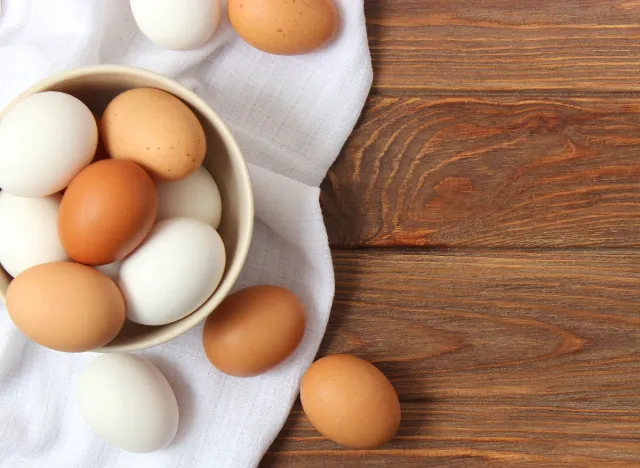
Protein punch: 6 grams
Whether you eat it scrambled, hard-boiled, or mixed into a muffin, one egg adds 6 grams of protein to your meal. A three-egg omelet for breakfast packs 18 grams of protein, or you can mix hard-boiled eggs with avocado and Greek yogurt for a protein-rich egg salad sandwich.
Add A Scoop Of Protein Powder
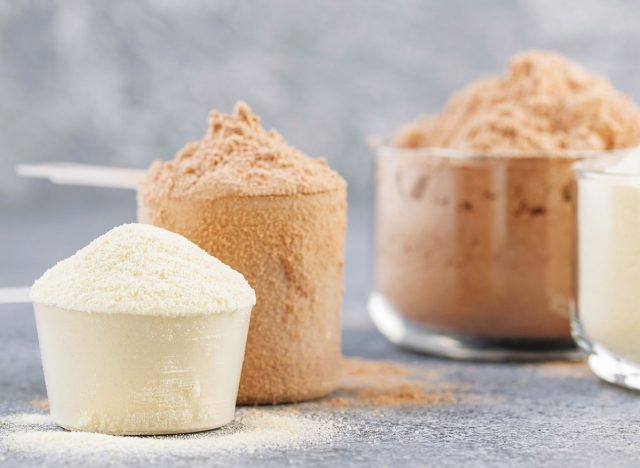
Protein punch: 20+ grams
Protein powder is a convenient way to sneak more protein into your day, whether you blend it in a smoothie, mix it into baked goods, or add it to your yogurt or oatmeal. The amount of protein you’ll get from protein powder depends on which type you use. Vegan protein powders and whey protein powders can add up to 30 grams of protein to your meal, depending on the brand you use.
Sprinkle Some Cheese
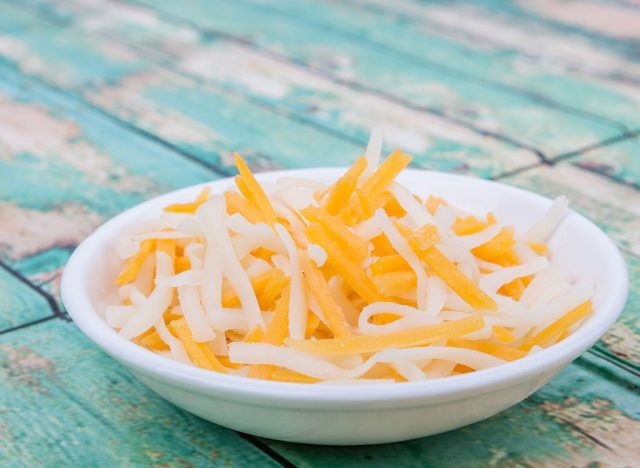
Protein punch: 8+ grams
Whether you like it shredded or sliced, cheese can add up to 8 grams of protein per ounce. Sprinkle shredded cheese on your eggs, soup, chili, potatoes, or salads, or add a slice to your next sandwich for a creamy, savory protein boost.
Include Beans
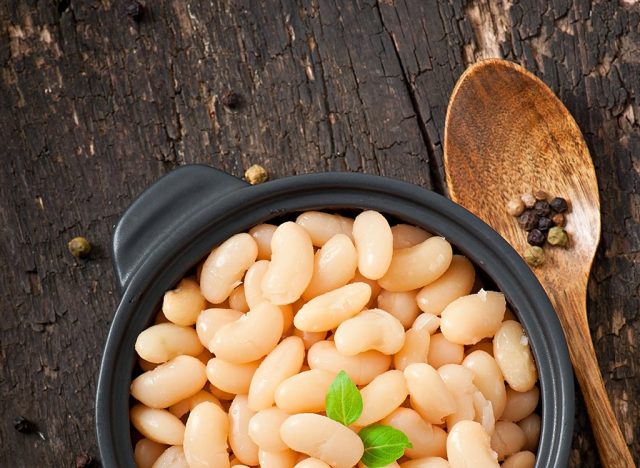
Protein punch: 7 grams
Beans are an amazing way to add protein to add protein and fiber to your diet without relying on animal products. Just a half cup of kidney, black, or pinto beans will add around 7 grams of protein to your meal.
For a super quick addition, just drain and rinse a can of beans, or make a big batch from dried beans (and stash any extras in the freezer). You can add mashed beans to toast or an omelet in the morning or stir them into your favorite pasta or soup.
Swap Your Pasta for Bean Pasta
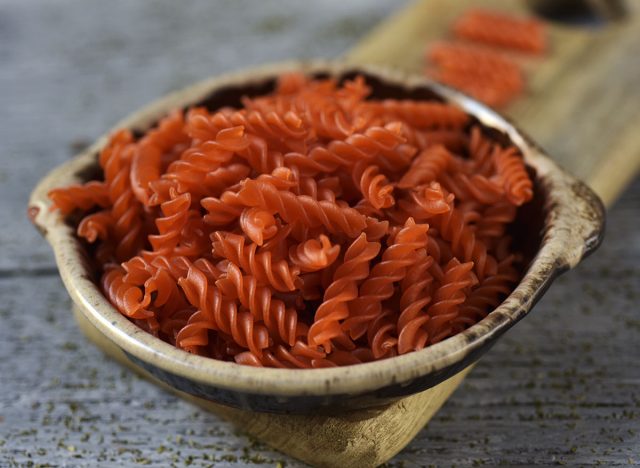
Protein punch: 20 grams
Enriched white pasta is low in protein, but swapping it with pasta made from lentils, beans, or enriched with other high-protein ingredients makes a big difference! The amount of protein can vary widely between brands and types.
Two ounces of Banza Chickpea Rotini Pasta has 20 grams of protein, while Pastabilities, a noodle made with a combination of wheat flour and chickpea and soy protein, has 24 grams of protein in the same amount. Experiment with the different varieties until you find your new favorite!
Choose Greek Yogurt
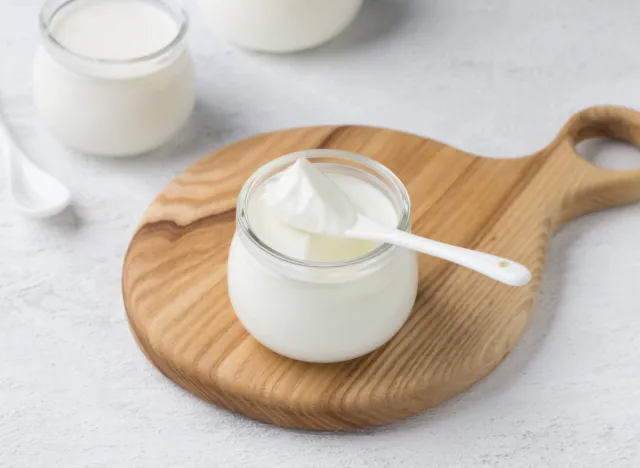
Protein punch: 15-20 grams
Swapping regular yogurt for Greek yogurt can give you around 8 more grams of protein per 6-ounce serving, depending on the brand. Since Greek yogurt is strained, you get more protein per volume and a thicker, creamy texture. You can use Greek yogurt in a breakfast parfait or swap sour cream (another lower protein dairy option) with it on baked potatoes, in casseroles, and for sauces and dressings!
Drink Dairy Or Soy Milk
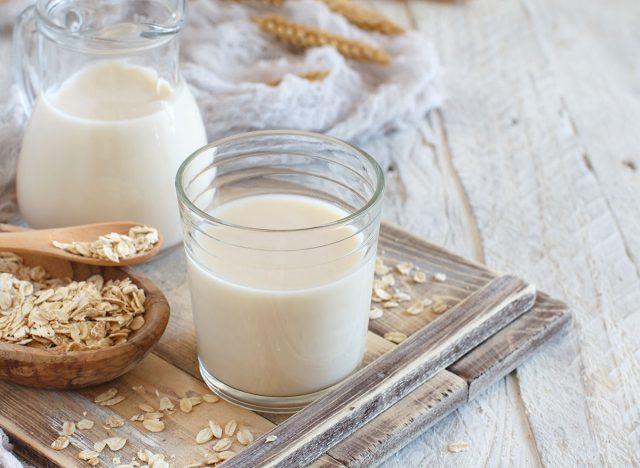
Protein punch: 8 grams
If you typically drink almond or oat milk, swap it with a glass of dairy or soy. Both dairy and soy milk have around 8 grams of protein per cup, while many plant-based options, like almond milk, have less than one gram. Use dairy or soy milk in your morning cereal, drink a glass with dinner, or pour it in for your smoothie base.
Add Edamame
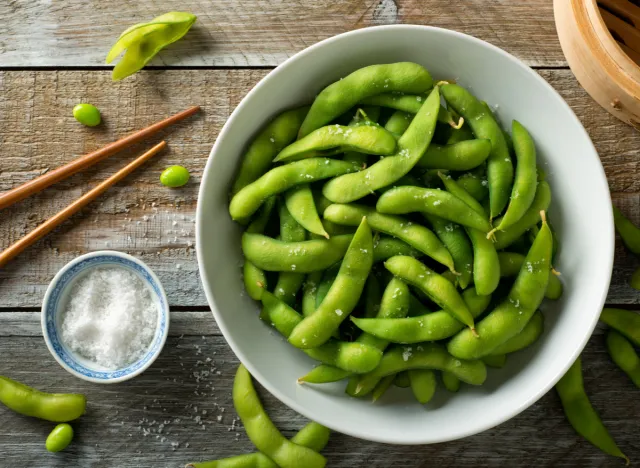
Protein punch: 9 grams
Soybeans are the richest protein bean around, with 30 grams of protein per dried cup. Edamame are young soybeans that have a tender crunch and mild flavor. They’re perfect for tossing into stir-fries, scrambles, salads, or grain bowls, and add 9 grams of protein for every half cup.
Add Cottage Cheese
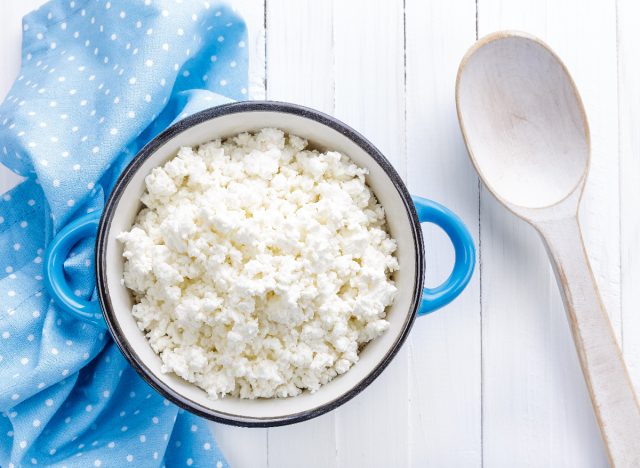
Protein punch: 12 grams
Cottage cheese is such a versatile addition to your diet. You can enjoy it in sweet or savory dishes and at breakfast, lunch, or dinner! Just a half cup of cottage cheese has 12 grams of protein and can be enjoyed with fruit, blended into pancakes, as a dip for crackers or vegetables, layered into lasagna, or eaten on its own as a savory side dish. It really is the perfect high-protein addition to any meal of the day.
Don’t Forget The Nuts
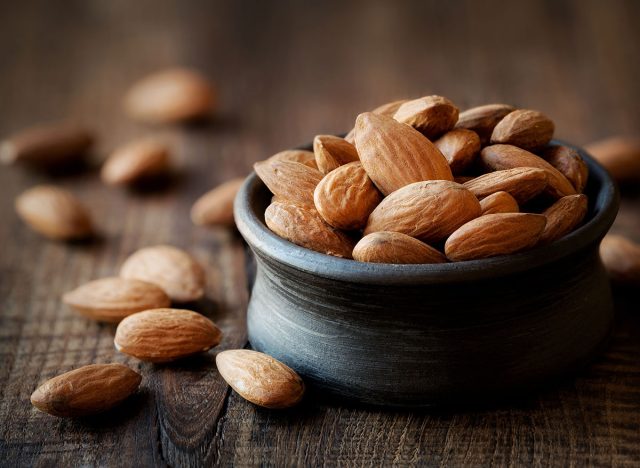
Protein punch: 5+ grams
Almonds, walnuts, and pistachios are crunchy, flavorful, and packed with healthy fats and plenty of protein. One ounce (a small handful) of mixed nuts has 5 to 6 grams of protein, making any meal a little more satisfying. Sprinkle them on salads, stir them into yogurt or oatmeal, or use them to coat chicken or fish as extra nutritious “breadcrumbs.”
Add Chia Seeds
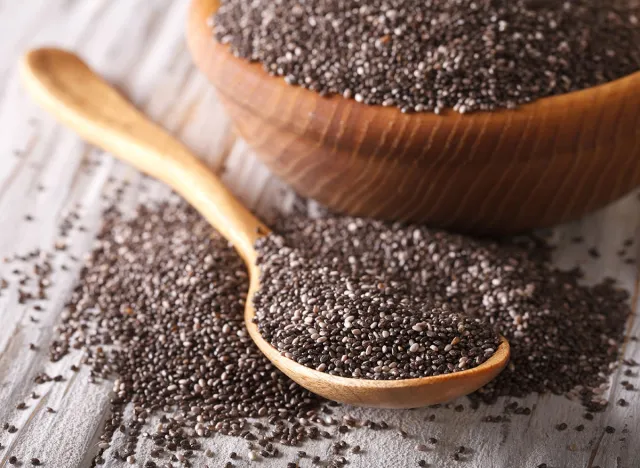
Protein punch: 4 grams
They start out crunchy, but once you add water, these teeny tiny seeds expand, creating a gelatin texture that adds volume and nutrients to anything they’re added to. One ounce has four and a half grams of protein. While they’re perfect in oatmeal or yogurt at breakfast, you can also mix them into soups, stews, smoothies, and baked treats.
Choose A High-Protein Cereal
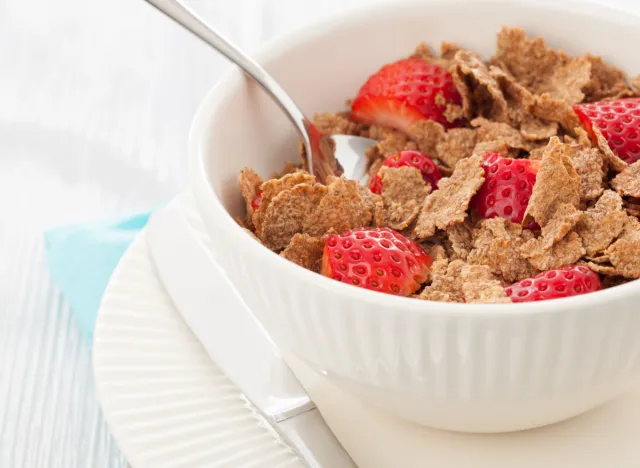
Protein punch: 8+ grams
While cereal has a reputation for being high in carbohydrates, there are plenty of high-protein cereal options to choose from. One serving of Special K High Protein Cereal has 10 grams of protein. You’ll get 14 grams of protein at breakfast when combined with half a cup of milk. At dinner, crush up Ezekiel Sprouted Whole Grain Cereal, which has 8 grams of protein in every half cup, and use it as a crunchy coaching for chicken or fish!
Spread With Nut Butter
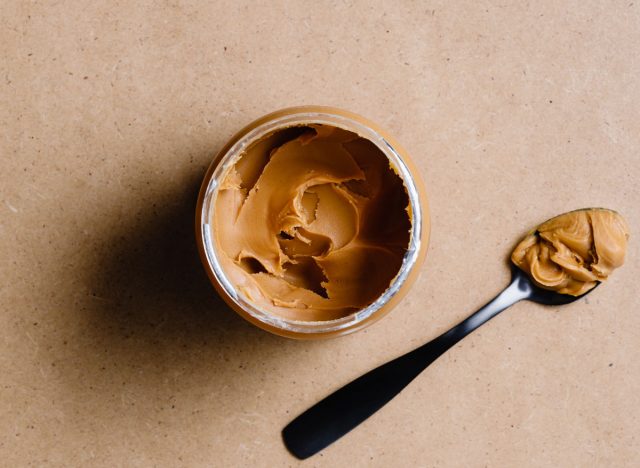
Protein punch: 7-8 grams
Nut butter, such as almond, peanut, or cashew butter, can make any meal more satisfying by adding protein and healthy fats. Two tablespoons of peanut butter can add about 7 grams of protein to your meal! Whether you enjoy a PB&J sandwich, spread it on toast in the morning, stir it into oatmeal, or make a delicious peanut sauce for your stir-fry, nut butter works at any time of day.
Choose Whole Grain Bread Over White
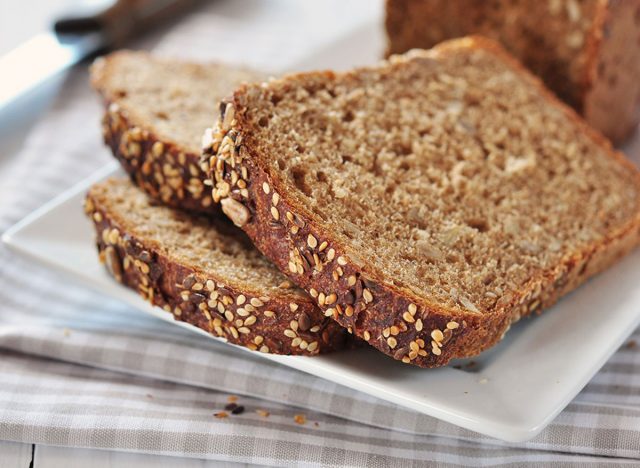
Protein punch: 4 grams
Whether it’s bread, pasta, or rice, swap enriched white for whole grain to add more protein to your meal. For example, a slice of white bread contains 2.5 grams of protein per slice (Aunt Millie’s Soft n’ Good White Bread has two grams of protein per serving), while a slice of whole wheat bread has 4 grams (Aunt Millie’s Whole Grain White Bread has four grams per serving). The whole-grain option adds four grams of protein to your meal in a sandwich or two slices of toast.
Load Up On Lentils
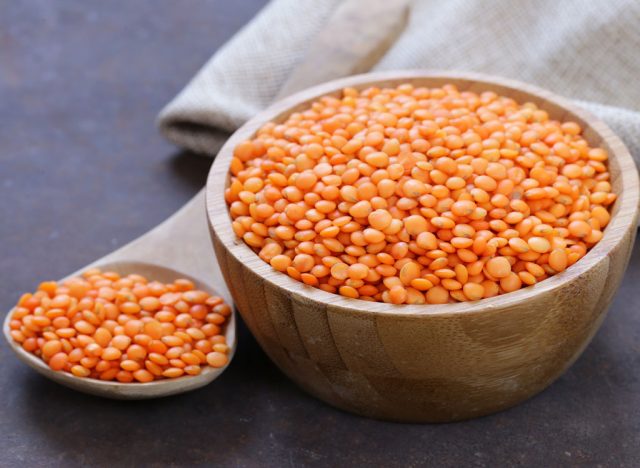
Protein punch: 18 grams
One cup of cooked lentils has 18 grams of protein, making it an amazing source of plant-based protein. Make a savory breakfast bowl with lentils and eggs, add them to a stew, or mash them into a loaf for a vegan meatloaf!
Stock Up On Canned Fish
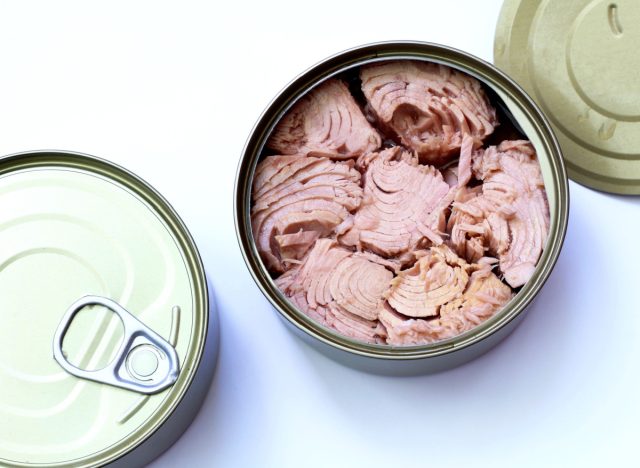
Protein punch: 20 grams
Keeping a stock of canned tuna and salmon in your pantry makes it easy and fast to get a protein (and omega-3) boost even when you’re short on time. A 3-ounce can of tuna has over 20 grams of protein and can be eaten in a sandwich, tossed on top of a salad or crackers, or stirred into noodles for a protein-packed tuna casserole.
Top With Grilled Chicken
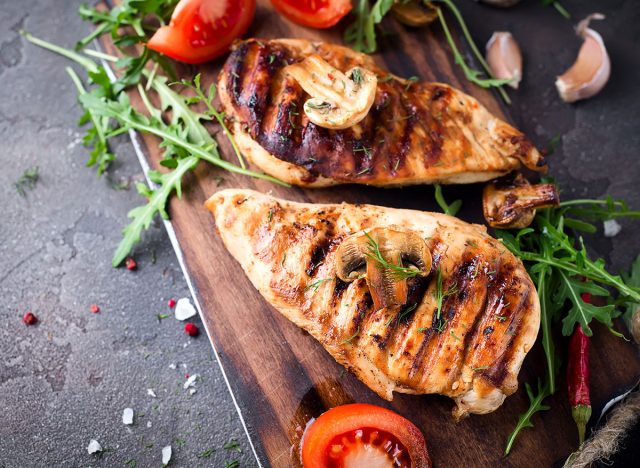
Protein punch: 20 grams
Grilled chicken, whether you make it fresh or warm up frozen chicken like Foster Farms Grilled Chicken Strips, can add over 20 grams of protein to your salad, sandwich, or pasta.
Serve With Smoked Salmon
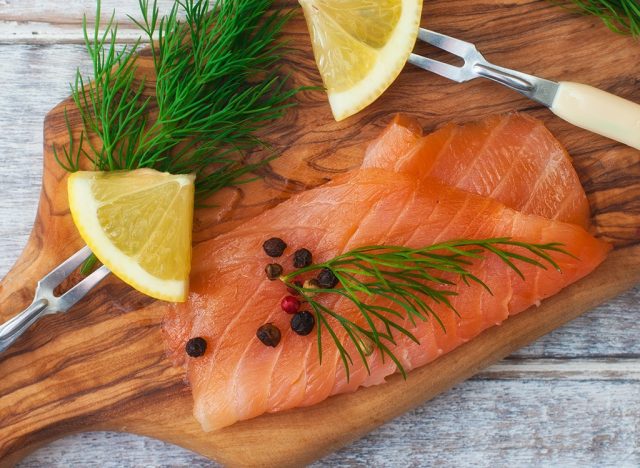
Protein punch: 15 grams
Instead of adding cream cheese to your bagel and stopping there, pile on a few slices of smoked salmon for more flavor and protein to round out and balance your breakfast. Three ounces of smoked salmon is just 100 calories and adds 15 grams of protein.
Sip On a Protein Shake
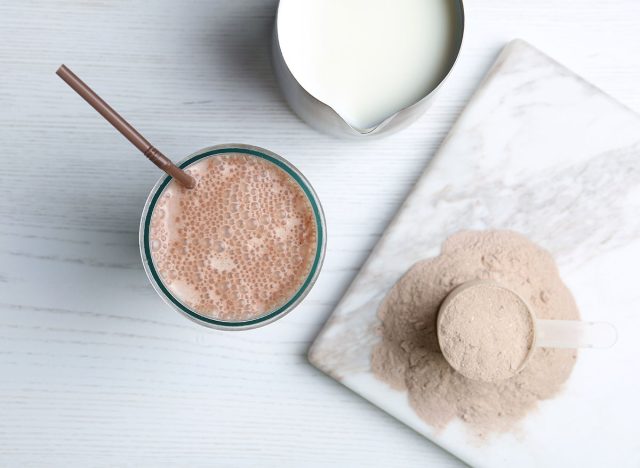
Protein punch: 20-30 grams
Protein shakes make it easy to increase your protein, even when you have no time or energy. Whether you use a pre-made shake or mix it up with a powder, you can add 30 grams of protein to your meal in just minutes.
Stir In Some Nutritional Yeast
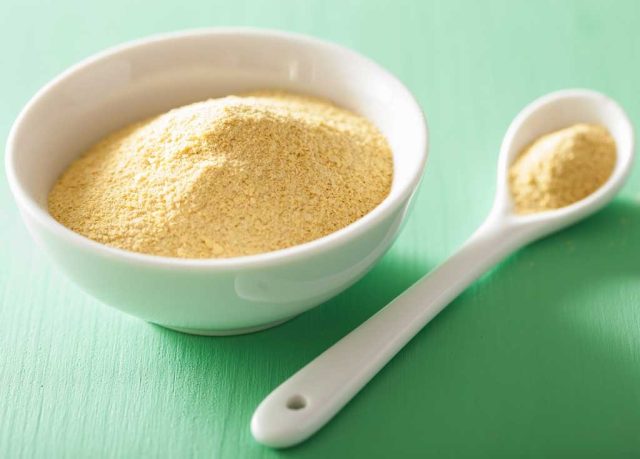
Protein punch: 5-8 grams
Nutritional yeast is a yellow, cheesy-flavored powder often used as a vegan source of vitamin B12, and it also happens to have between 5 and 8 grams of protein in every two-tablespoon serving. Add it to mashed potatoes or pasta, or sprinkle it over popcorn for a flavorful nutrient-rich protein addition.
Top With Tofu
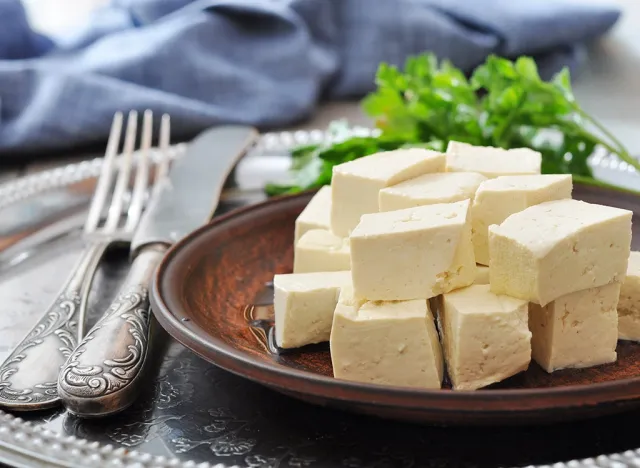
Protein punch: 18-20 grams
Tofu is a versatile plant-based protein made from soybeans. One cup of tofu has between 18-20 grams of protein. It comes in many different textures (silken up to extra firm) and has an incredibly mild flavor on its own, taking on any flavors you cook it with. You can use tofu as a plant-based meat substitute, as a replacement for scrambled eggs, or blend it into sauces and dressings.
Eat Your Peas
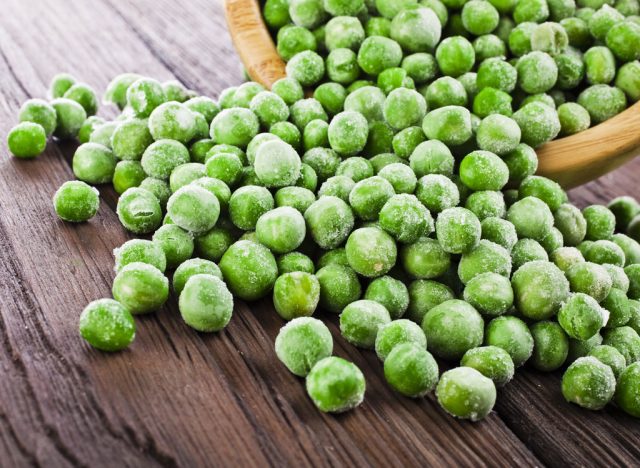
Protein punch: 8 grams
While peas are often seen as a starchy vegetable, as they contain more carbohydrates than many other veggies, they’re also surprisingly high in protein. One cup of peas has 8 grams of protein and can be added to pasta, casseroles, soups, or mashed into a pesto or hummus.
Dip With Hummus
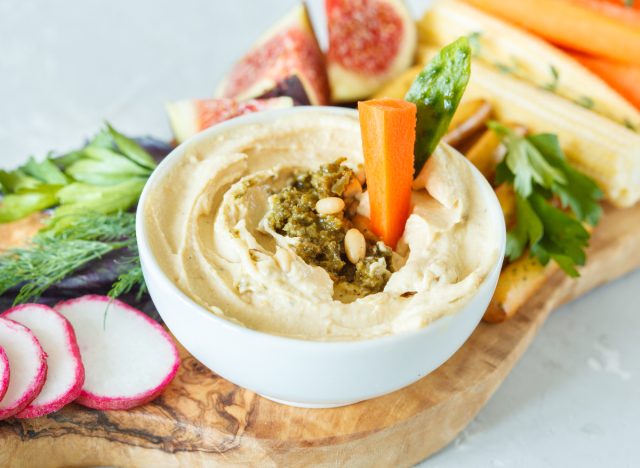
Protein punch: 3 grams
A two-tablespoon serving of hummus has around three grams of protein. Spread it on sandwiches or toast, stir it into pasta, or dip your veggies and crackers into this protein and fiber-rich dip.
Que Up The Quinoa
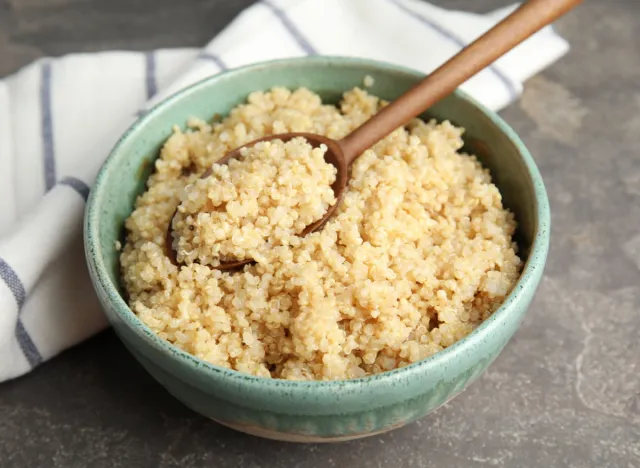
Protein punch: 8 grams
Quinoa is a gluten-free whole grain with 8 grams of protein in every cup. Use quinoa in homemade granola, as a substitute for oatmeal in hot cereal, in soups, or as a base for a grain bowl.
Sprinkle With Seeds
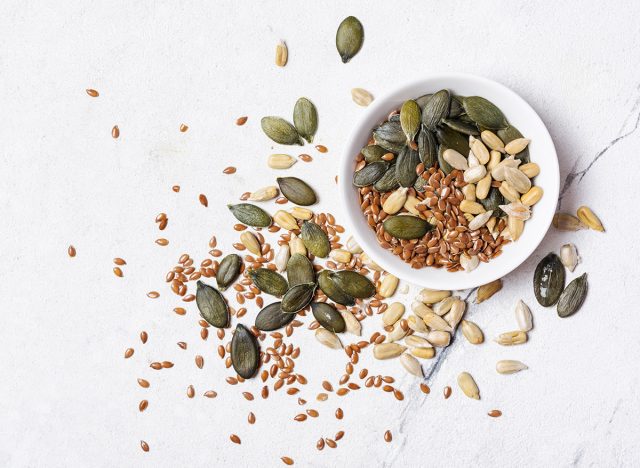
Protein punch: 10 grams
Pumpkin, sunflower, and sesame seeds add crunch and protein to your meals, making them a little more interesting and a lot more nutritious. Just a quarter cup of pumpkin seeds has around 10 grams of protein. Sprinkle seeds over salads, mix them into yogurt, or bake them into breads and other baked goods.








